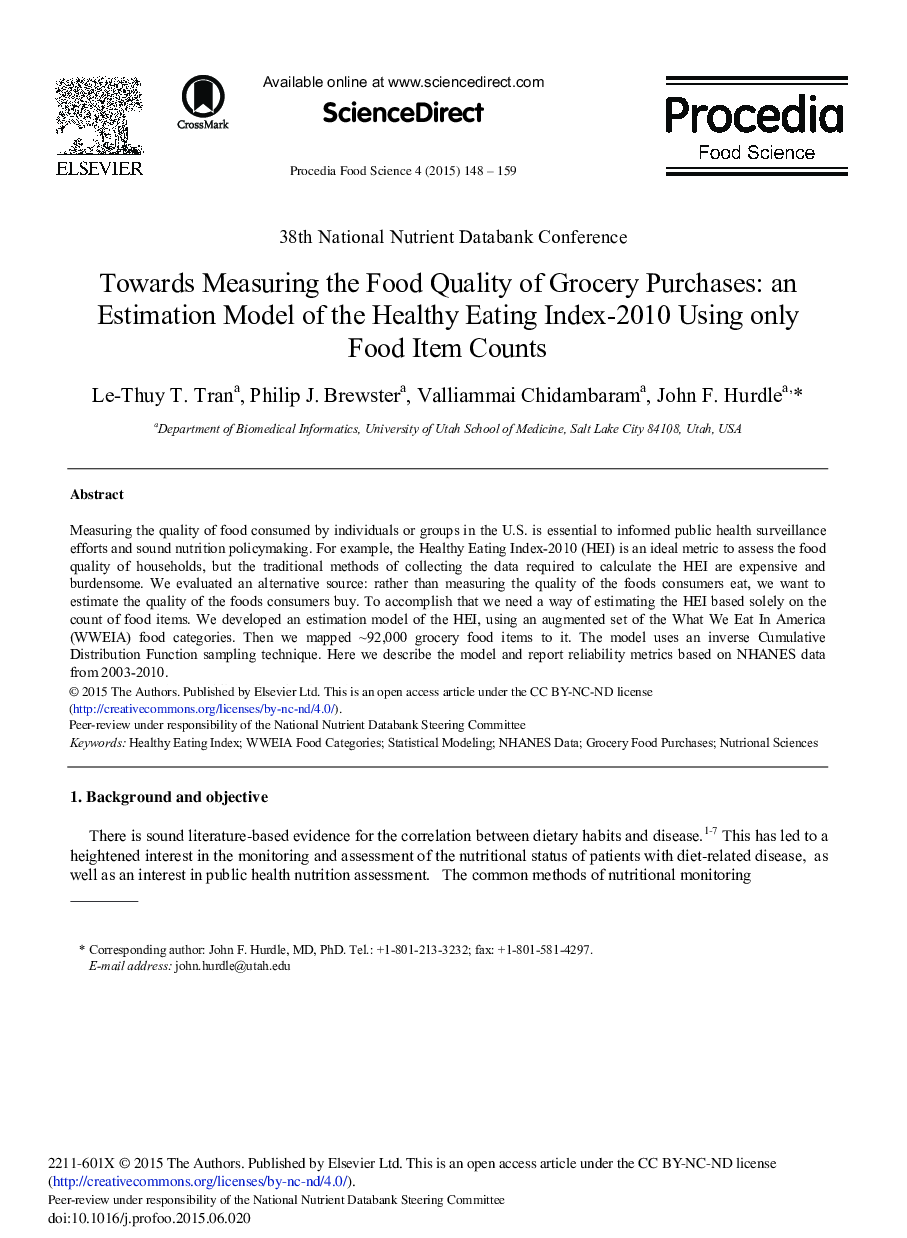| Article ID | Journal | Published Year | Pages | File Type |
|---|---|---|---|---|
| 1264835 | Procedia Food Science | 2015 | 12 Pages |
Measuring the quality of food consumed by individuals or groups in the U.S. is essential to informed public health surveillance efforts and sound nutrition policymaking. For example, the Healthy Eating Index-2010 (HEI) is an ideal metric to assess the food quality of households, but the traditional methods of collecting the data required to calculate the HEI are expensive and burdensome. We evaluated an alternative source: rather than measuring the quality of the foods consumers eat, we want to estimate the quality of the foods consumers buy. To accomplish that we need a way of estimating the HEI based solely on the count of food items. We developed an estimation model of the HEI, using an augmented set of the What We Eat In America (WWEIA) food categories. Then we mapped ∼92,000 grocery food items to it. The model uses an inverse Cumulative Distribution Function sampling technique. Here we describe the model and report reliability metrics based on NHANES data from 2003-2010.
